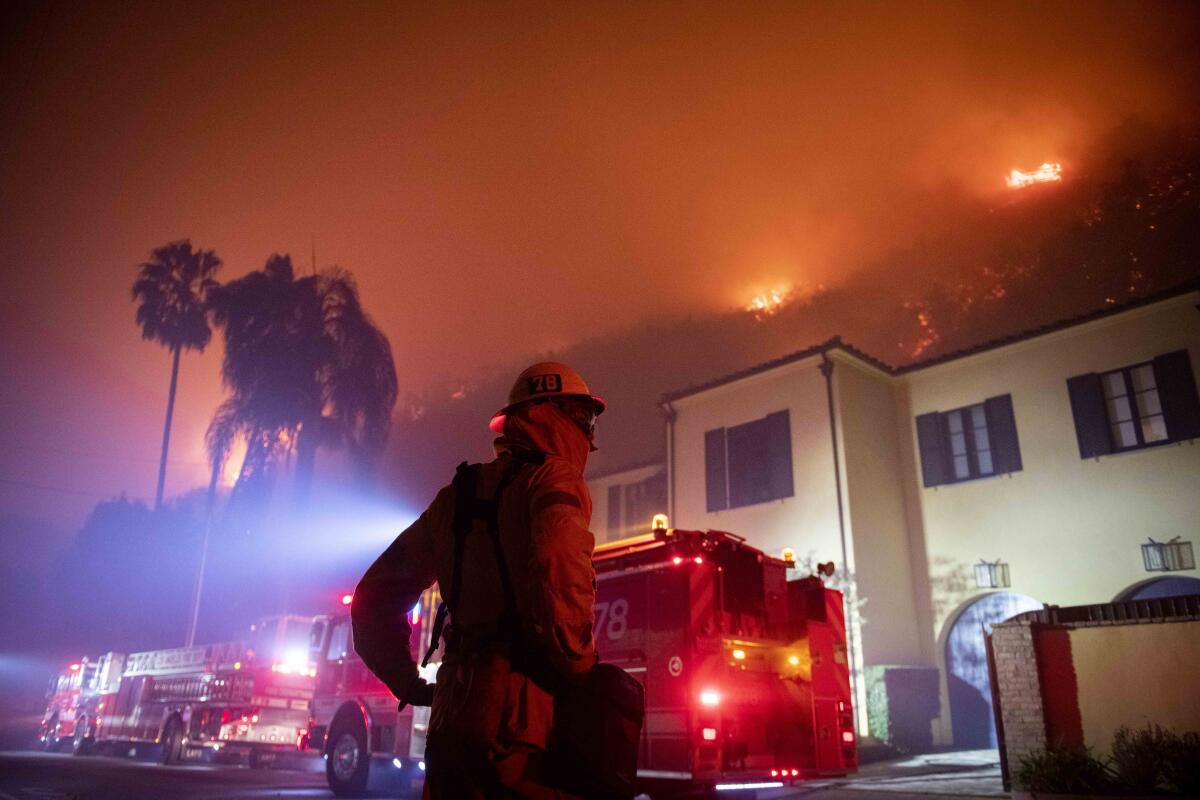Editorial: Climate change has set California on fire. Are you paying attention?

- Share via
California is in a state of emergency.
Since early October, millions of people in the northern and southern parts of the state have had their electricity shut off to prevent downed power lines from setting off deadly fires, like the ones that ravaged the state last year. But these unprecedented outages haven’t been as effective as had been hoped; despite them, a series of wildfires, fanned by extraordinarily heavy winds, have swept through the state forcing hundreds of thousands of people to evacuate their homes.
Nobody can honestly say this is a surprise, given the devastating fires of recent years. Yet it feels surprising all the same. How did things get so bad in California, so quickly?
The answer is climate change. It is here and our communities are not ready for it.
California is no stranger to fire, especially when the dry Santa Ana winds sweep through the southern end of the state, turning sparks into conflagrations. However, countless researchers and government reports have warned for years that climate change would amplify natural variations in the weather, leading to more frequent and more destructive wildfires.
It’s clear that conditions are getting worse throughout the state. Five of California’s 20 deadliest wildfires have occurred during the last two years. And 10 of the 20 most destructive wildfires, in terms of structures lost, occurred over the last 10 years.
And it’s also woefully apparent that the state’s infrastructure cannot handle this new normal. The power outages left many regions without cellular service, emergency information, traffic lights or the other essentials of a modern, functioning community. Roads clogged as people tried to evacuate. And the fires have proved again and again that even homes and commercial areas in suburban-style neighborhoods seemingly far from forests or chaparral can be torched by embers carried for miles by hurricane-force winds.
California has to retrofit itself to make communities more resistant to wildfires. That will mean, for example, making sure buildings are fire resistant and burying power lines in high-fire-risk areas when feasible and developing microgrids that can provide backup power. It will be extraordinarily expensive and politically fraught, but it’s essential to protect lives and control the chaos created by the growing fire threat.
But the wildfires are just the beginning of what Californians can expect. We know what’s coming as the effects of climate change became more pronounced. The state will have to contend with more floods, coastal erosion and deadly heat waves. Intense weather will overwhelm existing public and private infrastructure unless we adapt now and build more resilient communities.
California has been a leader in trying to slow climate change by cutting greenhouse gas emissions. That is still essential work because there’s still time to avoid some of the worst effects of global warming.
Climate change is at our doorstep in California. The rest of the world should be paying attention.
More to Read
A cure for the common opinion
Get thought-provoking perspectives with our weekly newsletter.
You may occasionally receive promotional content from the Los Angeles Times.










